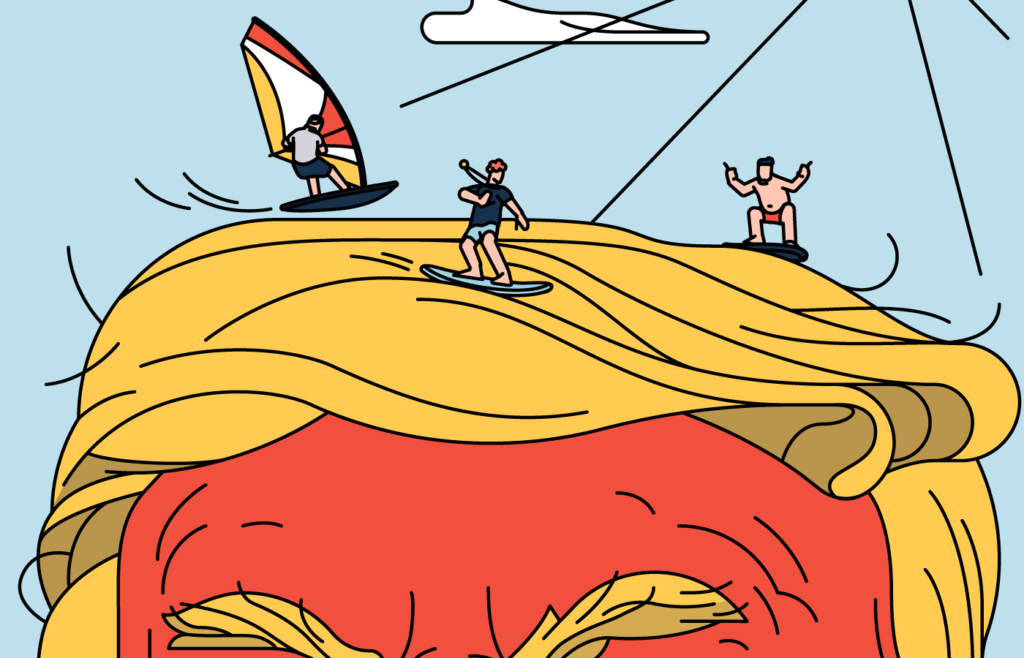Can you trust a brand?
Trust in media is plummeting.
According to the Edelman Trust Barometer 2024, trust in UK news media is at an all-time low. Across the Atlantic, it’s even worse, with YouGov US recently reporting that Americans now trust Donald Trump’s administration more than they trust the media. Yes, Donald Trump.
That should make every brand sit up and take notice.
While these trust issues primarily concern consumer media, the B2B world isn’t immune. Trust is the currency of business relationships and it’s just as fragile here. If trust in long-standing media brands can collapse, what does that mean for the corporate world?
The Trump effect

Trump is a politician. He is also a brand (think MAGA, think red hats). He has been able to maintain trust (at least among his supporters) despite a documented history of misinformation. Why does this happen? Because trust isn’t just about truth – it’s about perception, emotional connection and consistency.
Without meaning to sound glib, there are lessons here for brands. Trump has cultivated a devoted audience that feels emotionally invested in him. His followers don’t just listen to him; they believe him.
But here’s the catch: trust, when genuinely earned, is hard to gain and easy to lose, at least for commercial brands. Unlike Trump, who operates in a post-truth landscape, businesses operate in a world where credibility and reliability are non-negotiable. You don’t get to contradict yourself daily and still expect customer loyalty. You can’t lie and expect people to keep coming back.
How can brands earn – and keep – trust?
Recent research from Forrester identifies seven key trust levers that B2B brands must pull:
- Accountability – Own your mistakes and show how you’ll fix them.
- Competence – Demonstrate expertise and deliver results.
- Consistency – Stay true to your values and messaging.
- Dependability – Be reliable and keep your promises.
- Empathy – Understand and address customer needs.
- Integrity – Operate ethically and transparently.
- Transparency – Openly share how you do business.
So how can brands apply these trust levers in the real world and where does media fit in?
- Deliver on your promises. If you say your software reduces costs by 20%, prove it with data and case studies.
- Be consistent. Your brand’s messaging should not shift wildly depending on trends or market pressures. Stick to your principles.
- Be human. People trust people far more than they do faceless corporations. Showcase the human side of your brand, with leadership profiles and customer success stories.
- Admit when you’re wrong. Acknowledging missteps and addressing them head-on builds credibility.
- Engage in thought leadership. Publishing high-quality, research-backed content positions your brand as an industry authority.
If getting your messaging right is half the battle, then getting your message across is the other. And media, B2B or otherwise, still has a part to play here.
While it is true that trust in traditional media is declining, B2B media still holds significant influence, especially within professional circles. Working with trusted media partners can reinforce your brand’s legitimacy and this is as true now as it ever was. By leveraging independent validation, investing in quality and aligning with credible voices, brands can help bridge the trust gap.
Trust is a long game
Building trust isn’t about a single campaign or LinkedIn post. It’s an ongoing commitment to transparency, consistency and delivering real value. The brands that earn and sustain trust are the ones that don’t just say they are trustworthy – but prove it in everything they do.
If trust in media and institutions is crumbling, B2B brands have an opportunity to step up and fill the void. But remember: trust is hard-won and easily lost. Treat it like the precious commodity it is.

